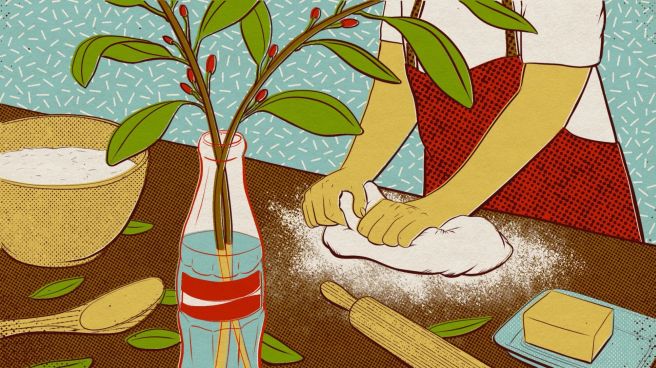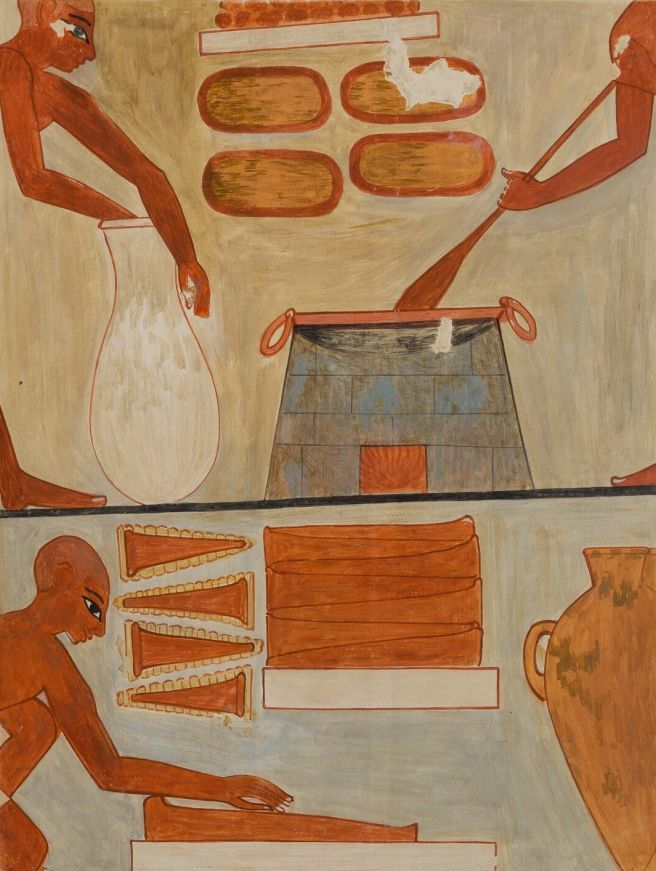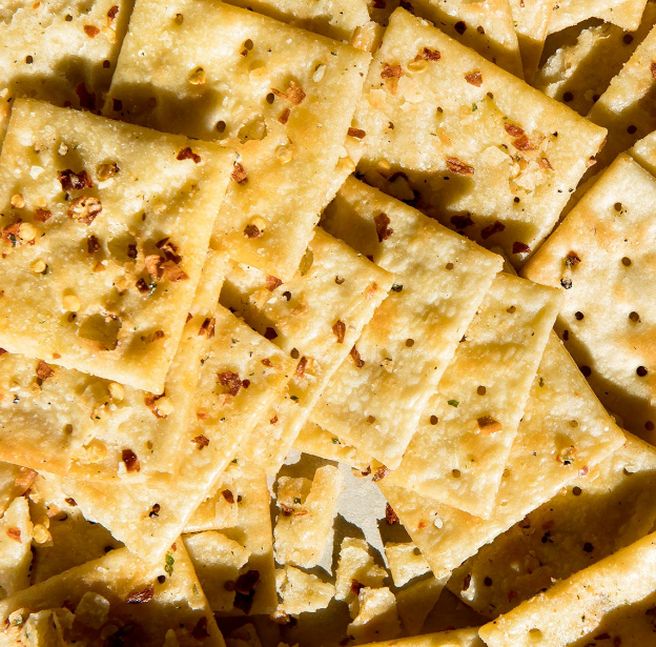“Gastronomy is the science of pain. Professional cooks belong to a secret society whose ancient rituals derive from the principles of stoicism in the face of humiliation, injury, fatigue, and the threat of illness. The members of a tight, well-greased kitchen staff are a lot like a submarine crew. Confined for most of their waking hours in hot, airless spaces, and ruled by despotic leaders, they often acquire the characteristics of the poor saps who were press-ganged into the royal navies of Napoleonic times— superstition, a contempt for outsiders, and a loyalty to no flag but their own…” From the late great chef Anthony Bourdain’s famous 1999 essay for The New Yorker, which formed the basis of what would later become ‘Kitchen Confidential’ and which, in a manner of speaking, started it all. Also see by the same author: ‘One Day—and One Night—in the Kitchen at Les Halles’
Tag: gastronomy
27 Eye-Opening and Invaluable Tips From Top Chefs
Here’s one from Amy Poon, founder of Poon’s, London: “People are always asking me for rice to water ratios. I seldom measure anything so I can’t tell you in cups, but here is a simple trick for measuring the right amount. Stick your index finger perpendicular to the surface of the rice in the pan and add water until it reaches the first joint of your finger. No idea why it works given different sizes of hands and pans, but it does…” Whether you want to thicken a stew, tenderise meat or get your scallops squeaky-clean, the pros have a trick for it. Now go check out the rest.
 27 Eye-Opening and Invaluable Tips From Top Chefs—Via The Guardian
27 Eye-Opening and Invaluable Tips From Top Chefs—Via The Guardian
Don’t Waste Banana Peels: Turn Them into Tasty Vegan ‘Pulled Pork’
“Believe it. The idea may not have caught on in the US yet, but people in Venezuela, India, and Southeast Asia have been cooking and eating banana peels for years. And not only are they edible, they’re good for you, too: banana peels contain potassium, fiber, antioxidants, vitamins B6 and B12, magnesium, and even protein…” Pig out. It’s all about the flavors anyway.
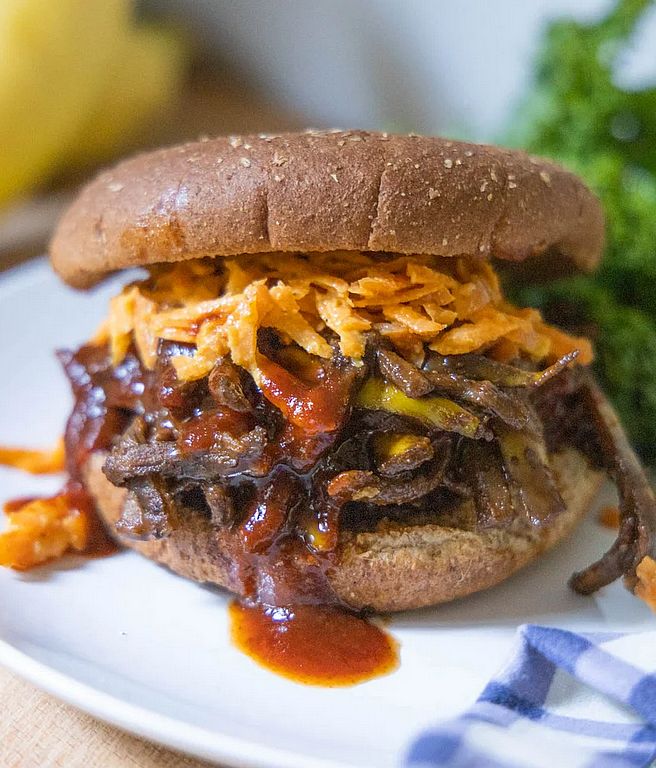 Don’t Waste Banana Peels: Turn Them into Tasty Vegan ‘Pulled Pork’—Via Popular Science
Don’t Waste Banana Peels: Turn Them into Tasty Vegan ‘Pulled Pork’—Via Popular Science
Survival Skills: How to and Why Make Bone Broth
“[B]roth made from bones is one of the ancestral superfoods that is gaining modern attention. Broth from bones is touted to contain minerals that fight tooth decay and osteoporosis. Bone broth is also believed by some to support the adrenal glands, and even fight arthritis and other degenerative diseases. It doesn’t even taste bad. In fact, some of the batches I’ve made tasted really good. But all that aside, bone broth is one of those aces up your sleeve to pull out during a survival situation in order to provide nutrition and boost morale should your food supply run low…”
 Survival Skills: How to and Why Make Bone Broth—Via Outdoor Life
Survival Skills: How to and Why Make Bone Broth—Via Outdoor Life
What Do You Mean You’re Not Toasting Your Oats?
Why not? It only takes five minutes, but it adds ten dimensions of flavor— whether your oat cereal is hot or cold… “You’ll know they’re done not by their appearance (the change in color will not be dramatic), but by their smell: the toasty aroma will waft up to you and be unmistakable. When it does, stop—”
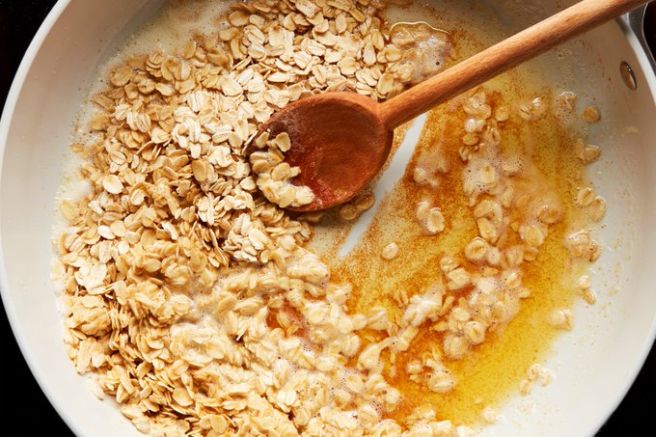 What Do You Mean You’re Not Toasting Your Oats?—Via Epicurious
What Do You Mean You’re Not Toasting Your Oats?—Via Epicurious
25 Recipes from the Great Depression We’ve Lost to History
“With resources scarce and money often scarcer, the bountiful pantries and kitchens of previous eras were only fond memories for most who lived through this time. Preppers might be well served to memorialize some of these recipes and reboot them for our modern era. Whether you are trying to pad a post-collapse menu with decidedly limited ingredients or just stave off boredom from the same old dish every meal, these recipes still have some life in them…”
 25 Recipes from the Great Depression We’ve Lost to History—Via The Survivalist Blog
25 Recipes from the Great Depression We’ve Lost to History—Via The Survivalist Blog
Steaming Eggs Is the Fast-Track to a Cozy Dinner
“Serve it with a bowl of rice and you’ve got dinner in less than 10 minutes..”
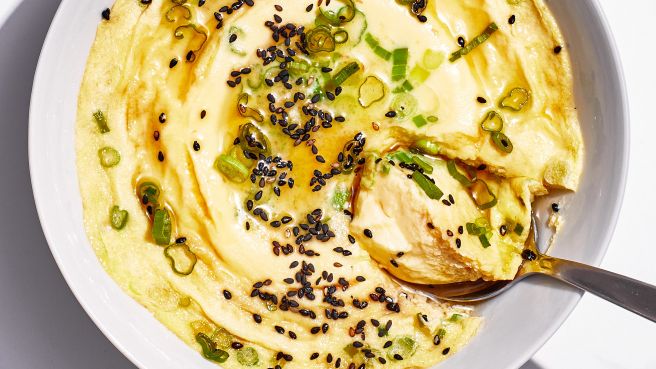 Steaming Eggs Is the Fast-Track to a Cozy Dinner—Via Bon Appétit
Steaming Eggs Is the Fast-Track to a Cozy Dinner—Via Bon Appétit
A Guide to Salt
“While there are many categories of salt, it’s important to remember that all edible salt, no matter the color, moisture content, or crystal size, is sodium chloride, and all salt originates from the oceans and seas, even if it isn’t harvested directly from the water…” Everything you need to know about the vast and varied world of edible salt, including the differences between all the types of salt you’ll see on the market.
 A Guide to Salt, the World’s Most Popular Food—Via Serious Eats
A Guide to Salt, the World’s Most Popular Food—Via Serious Eats
Bringing Frozen Bread Back to Life
“Take these steps to revive that bread you’ve stashed in your freezer…”
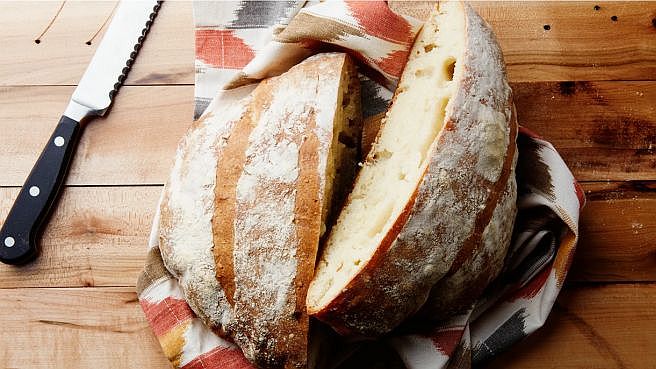 The Absolute Best Way to Bring Frozen Bread Back to Life—Via Epicurious
The Absolute Best Way to Bring Frozen Bread Back to Life—Via Epicurious
To Make Better Mushrooms, Squish ’Em
“Mushroom lovers, rejoice. Mushrooms skeptics, open your minds…”
How to Tell if an Egg Is Bad
The egg float test works every time: “If the egg sinks and falls to its wide side, it’s at peak freshness. If the egg sinks and stands, it’s fine. If the egg floats, it’s bad…”
 How to Tell if an Egg Is Bad (Plus Tips to Keep Eggs Fresh)—Via Epicurious
How to Tell if an Egg Is Bad (Plus Tips to Keep Eggs Fresh)—Via Epicurious
The Next Culinary Frontier
“Exploring the bold idea to eat invasives— from Japanese knotweed to European garlic mustard— out of existence, this emerging movement could blunt environmental and economic costs across the United States…”
A Guide to Tofu
“Tofu: Either you love it, or you haven’t had it prepared well. The jiggly soybean product has been around for eons— William Shurtleff and Akiko Aoyagi’s History of Tofu digs up a mention of tofu in a Chinese text dating to AD 950. Buddhist monks spread the good word about tofu across Japan and Korea, and a few centuries later, the protein made its way to the US…” High in protein, low in cost, and easy to work with, tofu has endeared itself to eaters across the globe. But with the dizzying array of tofu types out there, it’s worth learning your soft silkens from your medium blocks. Here’s a guide to identifying, shopping for, and preparing just about every kind of tofu you’ll find in stores.
 A Guide to Tofu Types and What to Do With Them—Via Serious Eats
A Guide to Tofu Types and What to Do With Them—Via Serious Eats
Sandor Katz and Fermentation as Metaphor
“I have written of fermentation as ‘a form of activism.’ I stand by this notion, but not because there is anything inherently political about fermentation. People can be narrow in their focus, and often the reasons people ferment are specific, for example preservation of garden vegetables, or a desire to improve health, or the pursuit of compelling flavours. The only thing that makes do-it-yourself fermentation radical is context: our contemporary system of food mass production, which is unsustainable in so many ways. Our dominant food system is polluting, resource-depleting and wasteful, and what it produces is nutritionally diminished, causing widespread disease. Perhaps even more profoundly, it deskills and disempowers people, distancing us from the natural world and making us completely dependent on systems of mass production and distribution— which are fine as long as they function, but are vulnerable to many potential disruptions, from pandemics to fuel shortages or price spikes to war and natural disasters. Expanding local and regional food production, and in the process transforming the economy that goes along with it, is the only real food security…” Sandor Katz from his book ‘Fermentation as Metaphor.’
 Bubbles, bacteria and me: Sandor Katz on why fermentation isn’t a fad—Via The Guardian
Bubbles, bacteria and me: Sandor Katz on why fermentation isn’t a fad—Via The Guardian
The Magnificent History of the Maligned and Misunderstood Fruitcake
“Nothing says Christmas quite like a fruitcake— or, at the very least, a fruitcake joke. A quip attributed to former ‘Tonight Show’ host Johnny Carson has it that ‘there is only one fruitcake in the entire world, and people keep sending it to each other.’ It’s certainly earned its reputation for longevity. Two friends from Iowa have been exchanging the same fruitcake since the late 1950s. Even older is the fruitcake left behind in Antarctica by the explorer Robert Falcon Scott in 1910. But the honor for the oldest known existing fruitcake goes to one that was baked in 1878 when Rutherford B. Hayes was president of the United States…”
 The Magnificent History of the Maligned and Misunderstood Fruitcake—Via The Conversation
The Magnificent History of the Maligned and Misunderstood Fruitcake—Via The Conversation
The Omnivore’s Dilemma
“It’s not that I never cook, but any recipe I make has to fit my rule: five ingredients, max. I learned this awesome rule from a pint of Häagen-Dazs…” Cartoonist Hilary B. Price on what we talk about when we talk about what’s for dinner.
The Coca Story Goes Way Beyond the Cola
“To Americans, the leaf is a symbol of unhealthy habits, but in the Peruvian Andes, it’s a source of nutrients, energy, and flavor in food and drinks… In Andean communities, the cultural significance of coca leaves goes beyond food, drink, and medicine. Coca leaves are also present at engagements, weddings, religious festivals, funerals, and shamanic rituals. Held as a trio, the fanned-out coca leaves represent the Inca realms of the world above, the surface world, and the world below. And, as a sacred offering to Pachamama (Mother Earth) or Apu mountain gods, they ensure a good harvest and provide protection…”
Why’s It Taken so Long for Foreign-Language Characters and Words to Make It into English Cookbooks?
“[A]t their best, cookbooks are not just recipe collections, but rather a glimpse into how people live and eat. For many cookbook authors, understanding a culture’s food requires knowing how it names, describes, and writes about its dishes. To leave out all traces of the original language or writing system is to miss some cultural and emotional resonances of a given food…” In the past, printing technology was a hurdle. But it’s also about publisher buy-in and the author’s wishes— and willingness to do extra labor.
The Chef Preserving Dishes from Every Corner of Nepal
“Nepal’s ancient city of Patan has a cobweb of alleys lined with intricate earthen buildings and temples. Down one alley, a lone blackboard signposts Raithaane, sheltered in a courtyard. It serves traditional dishes that are unrecognizable to many Nepali urbanites. There’s batuk, black lentil fritters from Magar and Khas communities in the southwest; rikkikur, potato pancakes with fermented buttermilk and yak butter from Himalayan communities; and arikanchan, pinwheels of lentil paste rolled with taro leaves, from communities along the border with India. Raithaane co-owner Prashanata Khanal wants to address the unknowing. He wants Nepal to value its own food, as well as its unique ingredients and food system. ‘Nepali people know more about other cuisines than they do about Nepali food,’ says Khanal. ‘That’s what keeps me going…'” From blog to bistro, Prashanta Khanal’s focus is Nepal’s forgotten and overlooked foods.
 The Chef Preserving Dishes from Every Corner of Nepal—Via Gastro Obscura
The Chef Preserving Dishes from Every Corner of Nepal—Via Gastro Obscura
The Simple Perfection of Fried Eggs and White Rice
“The great thing about egg rice is that it’s hardly cooking. If you can fry an egg, then you can make egg rice. And it’s filling but not too filling, perfect for that weird in-between pause after work and before dinner, when you’re so hungry you can’t imagine how you’ll even make it to dinner, let alone cook it…” Many cultures have some variation of egg rice. In South Korea, the local version of the lifesaving pantry meal is called “gyeran bap.”
 The Simple Perfection of Fried Eggs and White Rice—Via NYTimes
The Simple Perfection of Fried Eggs and White Rice—Via NYTimes
Medieval Europeans Didn’t Have Tupperware, They Had Pastry Coffins
Even on Halloween, prying open the lid of a stiff, sealed coffin would be considered a ghastly endeavor. But in Medieval Europe, sawing the top off a well-executed coffin revealed something delicious, rather than disgusting. A coffin, spelled coffyn in 12th-century English, referred to self-standing pastry made from flour, water, and sometimes fat. Like a sort of medieval Tupperware, coffins preserved the foods they contained and were rarely eaten. During the Tudor period, the English loved pastry cases so much that they developed a saying: “If it’s good, tis better in a Coffyn.”
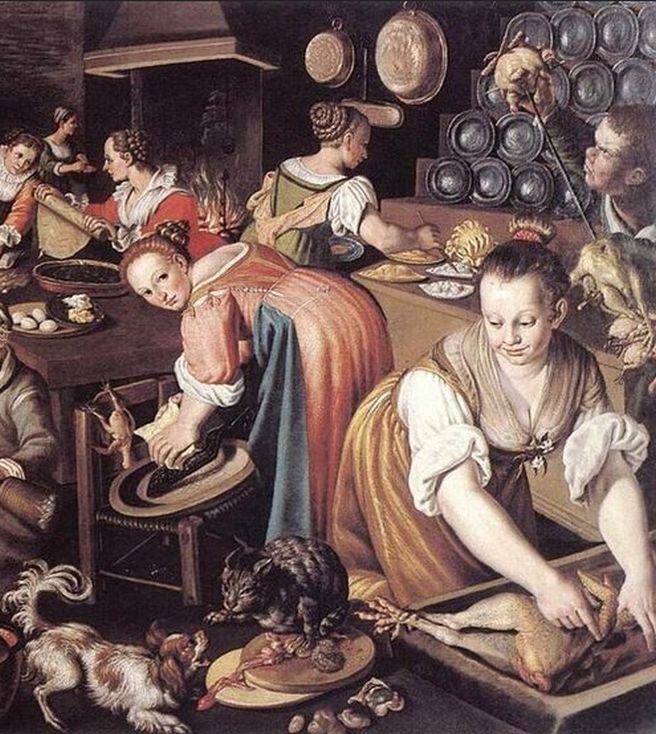 Medieval Europeans Didn’t Have Tupperware, They Had Pastry Coffins—Via Atlas Obscura
Medieval Europeans Didn’t Have Tupperware, They Had Pastry Coffins—Via Atlas Obscura
Eat like Jane Austen
“Part of a trend of scholars paying increasingly serious attention to how women writers felt about food and domesticity, the book is a vibrant testament to the everyday labor that goes into creating literary genius. ‘Intellectual work is not separate from housework,’ Gehrer says. And the book is a reminder of the life of Martha Lloyd, a woman whose industry, charity, and grace made her a character right out of a Jane Austen novel…” Austen lovers can now own a copy of the recipes Jane Austen likely ate every day: ‘Martha Lloyd’s Household Book: The Original Manuscript from Jane Austen’s Kitchen‘
Ancient Egyptian Recipes
“The ancient Egyptians left writing everywhere, with hieroglyphs carved painstakingly onto stone steles and miraculously preserved in papyrus. Though historians are able to study ancient texts on subjects from trade to funeral rites, one category is largely missing from the record: recipes. Without any textual directions or menus, historians have looked elsewhere to unlock the secrets of a 5,000-year-old culinary culture. As it turns out, paintings on tomb walls can provide a rare glimpse into one of the oldest cuisines in the world…” Check out the recipes and make bread fit for a pharaoh and a sweet treat out of tiger nuts.
Ranch Isn’t a Dressing. It’s a Lifestyle.
“Ranch, with the familiar flavors of dried green herbs from the grocery store (dill, chives, parsley) colliding with dairy (mainly buttermilk but sometimes yogurt or mayonnaise), dry mustard seed, and black pepper, is one of the ‘American mother sauces,’ says journalist and author Rachel Wharton, who wrote about it in her wonderful book American Food. Wharton groups ranch into the American condiment canon, along with barbecue, ketchup, and crudité dipping sauce rival blue cheese. She points out wisely that, as a rule, ranch complements basically anything with bacon, anything with tomatoes, and is ‘even better when it is both,’ meaning it can be subbed in for mayo on a BLT or drizzled over the meatiest of pizza slices…”
Miyazaki’s Magical Food
“My obsession with anime food has only grown over time and my love of Miyazaki films has grown with it. Whenever I look down at my arm and see the shiny red bento tattoo from My Neighbor Totoro, it reminds me to take a deep breath and relax. It allows me to imagine a more peaceful world, and creates a brief, gentle escape, if only for a moment.”
 Miyazaki’s Magical Food: An Ode to Anime’s Best Cooking Scenes—Via Serious Eats
Miyazaki’s Magical Food: An Ode to Anime’s Best Cooking Scenes—Via Serious Eats
How a ‘Bubble Expert’ Decoded the Physics of Making Mezcal
“For more than 400 years, rural communities in 24 Mexican states have used more than 50 species of agaves to distill mezcal, a clear spirit similar to tequila. But mezcal production remains mostly artisanal: The agave plants are manually cut, their hearts braised in underground pits and then macerated with the help of a horse, and finally distilled one or two times in wooden barrels called tinas. In all cases, artisans check the alcohol content of the liquor using the bubble-producing method…”
 How a ‘Bubble Expert’ Decoded the Physics of Making Mezcal—Via Gastro Obscura
How a ‘Bubble Expert’ Decoded the Physics of Making Mezcal—Via Gastro Obscura






